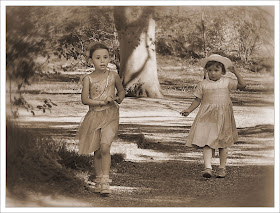It stopped raining for a few minutes yesterday afternoon so I popped out to see what was happening in the wood. Bluebells were blooming, as you can see. I'm not sure if these are good old English bluebells or those nasty foreign ones that are taking over in so many places. Pretty anyway.
Even gnarled old trees like this one are resplendent in their new finery as leaves burst out all over.
Down in the meadow - literally down, as in down on my knees - to view the buttercups from an insect's point of view.
Look up, little insect, there are cowslips in the meadow too.
Topcliffe Mill, which was once a watermill to grind wheat and barley, stands smartly in the corner of the meadow, next to the little gate leading to a public footpath.
That cheerful little flower, Herb Robert, growing in the churchyard. It grows in my garden too, no matter how much of it I pull out! "Fresh leaves can be eaten or tossed into a mug to make tea", or so I've read in a book. Judging by the stink it leaves on your hands I wouldn't want to try it. It also repels mosquitoes, which shows that your average mozzy has more sense than people who write books!
"Pansies, lilies, kingcups, daisies,
Let them live upon their praises;
Long as there's a sun that sets,
Primroses will have their glory,
Long as there are violets,
They will have a place in story:
There is a flower that shall be mine,
'T is the little Celandine."
Thus wrote Mr William Wordsworth of the Lesser Celandine. In fact he wrote three poems about the flower, but despite the poet's enthusiasm few others seem to notice it.
While poets and photographers are down on their knees admiring the flora an almighty storm could be brewing just behind them. Best head for home and get the kettle on.
Take care.


























